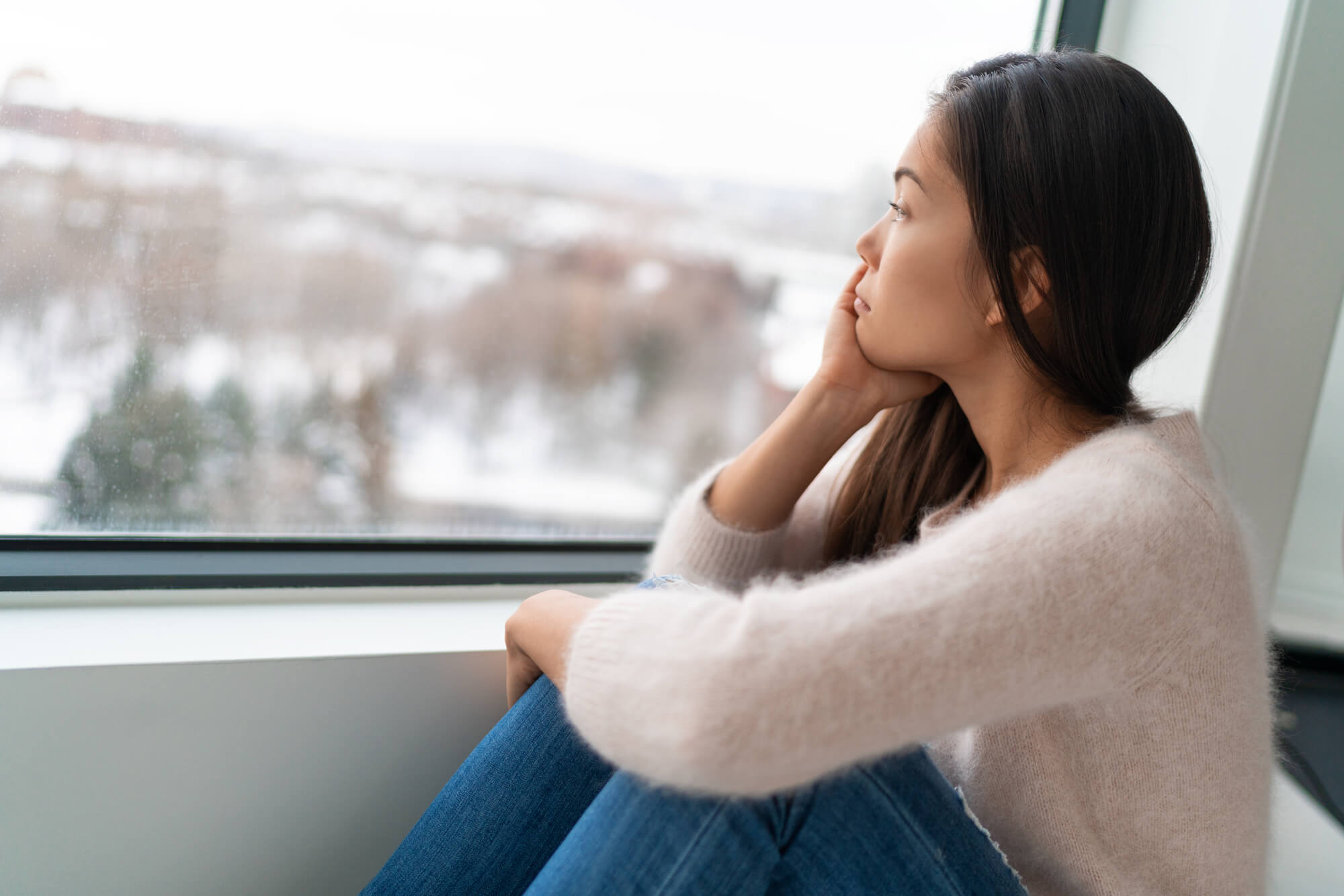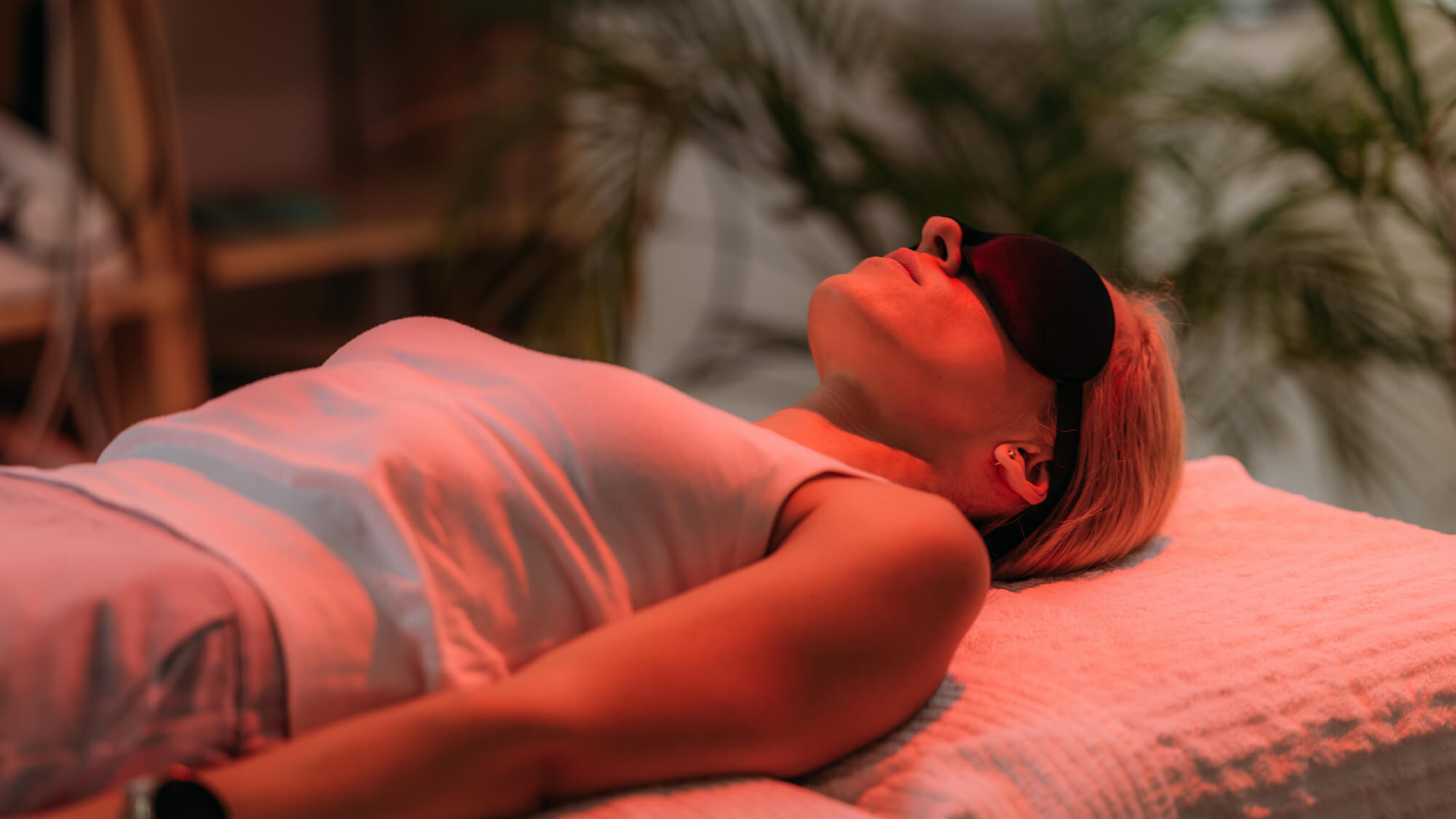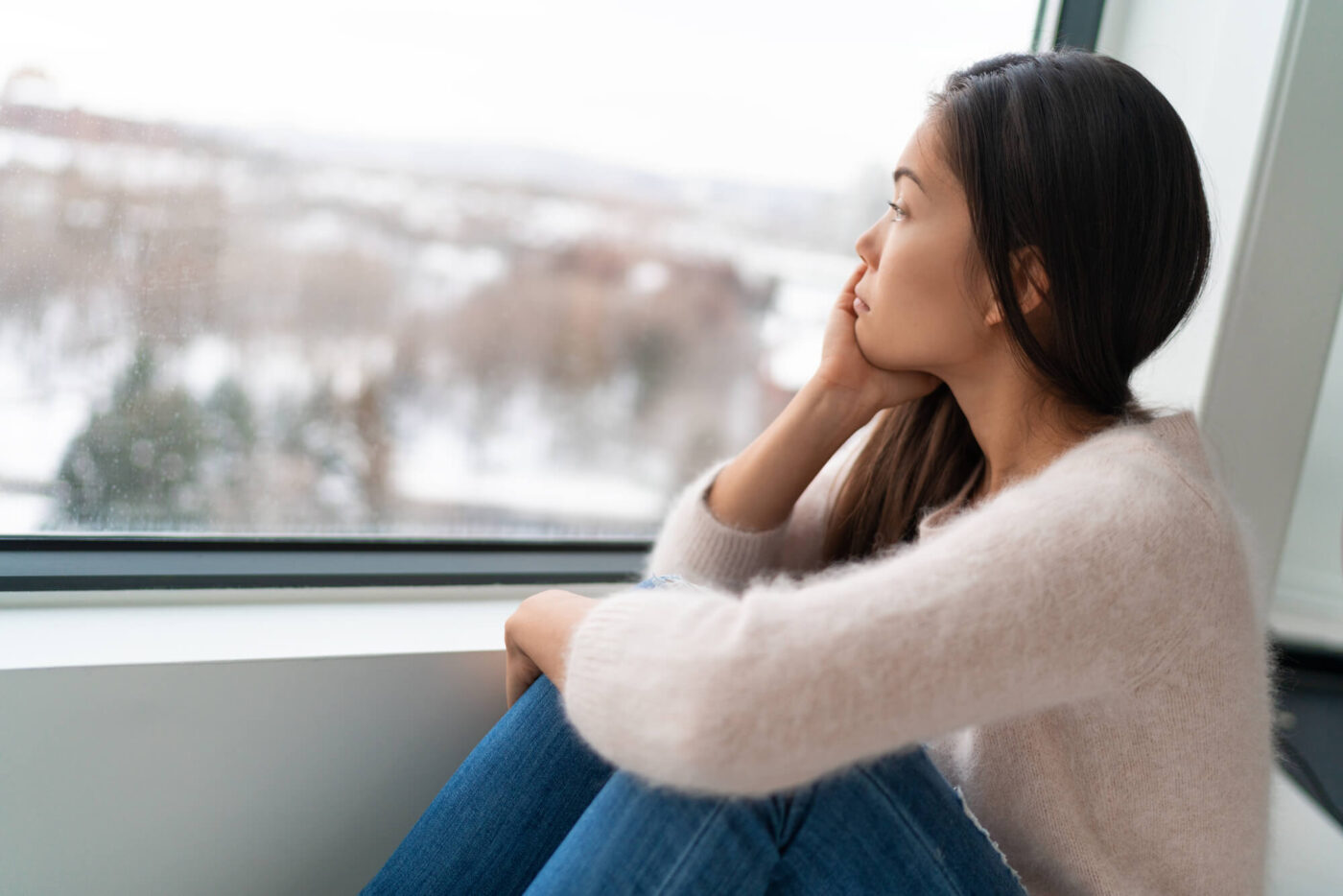
Seasonal Affective Disorder (SAD) is a form of depression that occurs in response to seasonal changes, typically during the fall and winter months when sunlight exposure is significantly reduced. This lack of natural light can disrupt circadian rhythms, lower serotonin levels, and impact overall mood and energy levels. While traditional treatments like light therapy using bright white light have been widely used, emerging research suggests that red light therapy (RLT) may also provide significant benefits in alleviating symptoms of SAD. How Red Light Therapy Helps with Seasonal Affective Disorder
Red light therapy works by delivering specific wavelengths of red and near-infrared light to the body, penetrating the skin and stimulating mitochondrial function. This process enhances cellular energy production, reduces inflammation, and supports neurological function, which can have a profound impact on mental well-being. Unlike bright white light therapy, which primarily influences circadian rhythms through exposure to the eyes, red light therapy affects the body at a deeper cellular level, helping to regulate mood and improve energy levels.
Boosting Serotonin and Dopamine Production
Serotonin and dopamine are two key neurotransmitters responsible for regulating mood, motivation, and emotional balance. Reduced sunlight exposure during winter months can cause serotonin levels to drop, contributing to feelings of sadness, irritability, and fatigue. Dopamine, often referred to as the "feel-good" neurotransmitter, plays a role in pleasure and reward, which can also become imbalanced in those suffering from SAD.
Red light therapy helps by stimulating serotonin and dopamine production through enhanced mitochondrial function. By increasing ATP (adenosine triphosphate) production, red light therapy improves overall brain energy metabolism, which can lead to improved mood, emotional stability, and a greater sense of well-being. Regular exposure to red light therapy may help counteract the effects of seasonal depression, making it easier to maintain motivation and mental clarity throughout the darker months.
Regulating Circadian Rhythms for Better Sleep
Disruptions in the body's natural sleep-wake cycle are common among individuals with Seasonal Affective Disorder. Since sunlight plays a crucial role in regulating melatonin production, shorter daylight hours can lead to difficulty falling asleep, waking up, and experiencing restorative rest. Poor sleep quality often exacerbates symptoms of depression and leads to increased fatigue, reduced focus, and heightened stress.
Red light therapy helps regulate circadian rhythms by influencing the body's internal clock, signaling when it is time to wake up and wind down for sleep. By stimulating the brain’s response to light exposure, RLT supports healthy melatonin production, ensuring that individuals fall asleep more easily and wake up feeling refreshed. Unlike blue or bright white light therapy, which may sometimes disrupt sleep if used too late in the day, red light therapy has been shown to promote relaxation and deeper sleep cycles without overstimulation.
Reducing Fatigue and Enhancing Energy Levels
One of the most common and debilitating symptoms of Seasonal Affective Disorder is persistent fatigue and a general lack of motivation. Many individuals struggling with SAD report feeling sluggish and unmotivated, making even simple daily tasks feel overwhelming. This occurs because lower exposure to sunlight affects energy metabolism in cells, reducing their ability to function efficiently.
Red light therapy counteracts fatigue by increasing ATP production within the mitochondria, which fuels cells with the energy they need to operate effectively. By improving cellular respiration and oxygen utilization, RLT helps combat feelings of sluggishness and increases overall vitality. Users often report a noticeable boost in energy levels within a few weeks of consistent red light therapy use, making it easier to stay active, productive, and engaged throughout the winter months.
Alleviating Inflammation and Stress Response
Chronic inflammation and oxidative stress have been linked to depression and other mood disorders, including SAD. Inflammatory markers in the body can increase in response to stress, poor diet, lack of exercise, and inadequate sunlight exposure, all of which are common during winter. Increased inflammation in the brain can impair neurotransmitter function and negatively impact mental health, exacerbating symptoms of seasonal depression.
Red light therapy is known for its anti-inflammatory effects, which help reduce oxidative stress and promote overall cellular health. By lowering inflammation in the nervous system, RLT supports cognitive function, emotional balance, and resilience to stress. Many individuals using red light therapy for SAD notice improvements in mental clarity, reduced anxiety, and a greater ability to manage stress over time.
Enhancing Cognitive Function and Mental Clarity
In addition to mood disturbances, Seasonal Affective Disorder can also impair concentration, memory, and cognitive processing. Individuals with SAD often experience "brain fog," making it difficult to focus on tasks, retain information, or think clearly. This cognitive sluggishness can interfere with work, school, and daily activities, leading to frustration and decreased productivity.
Red light therapy enhances cognitive function by improving blood circulation to the brain, reducing oxidative stress, and increasing ATP production in neurons. These combined effects promote mental clarity, improve memory retention, and sharpen focus. As mitochondrial function improves, users often experience heightened alertness and improved decision-making abilities, which can be particularly beneficial during the winter months when cognitive function tends to decline.

How to Use Red Light Therapy for Seasonal Affective Disorder
For best results, individuals experiencing SAD should incorporate red light therapy into their daily routines. Sessions should last between 10-20 minutes per day, ideally in the morning to support circadian rhythm regulation. Positioning the light at an appropriate distance (6-12 inches from the skin) and targeting key areas such as the face, chest, or back of the head can optimize results. Consistency is essential, as regular use is required to see long-term improvements.
Combining RLT with Other SAD Treatments
While red light therapy can be highly beneficial on its own, it can also be used alongside other treatments for SAD, including:
- Bright Light Therapy – Using white light therapy in the morning can complement the cellular benefits of RLT by mimicking natural sunlight exposure.
- Vitamin D Supplementation – Since reduced sun exposure can lead to vitamin D deficiency, taking supplements can support mood balance and immune function.
- Exercise and Outdoor Activity – Engaging in physical activity and spending time outside, even on cloudy days, can further enhance mental well-being.
- Mindfulness and Stress-Reduction Techniques – Practicing meditation, yoga, or breathing exercises can support emotional resilience and relaxation.
Red light therapy presents a promising, non-invasive treatment option for those struggling with Seasonal Affective Disorder. By stimulating serotonin production, regulating circadian rhythms, boosting energy levels, reducing inflammation, and enhancing cognitive function, RLT offers a multifaceted approach to combating seasonal depression. When used consistently and in conjunction with other wellness strategies, red light therapy can help individuals maintain better mental and emotional health throughout the darker months of the year.
Frequently Asked Questions About Light Therapy for Seasonal Affective Disorder (SAD)
What is light therapy, and how does it help with seasonal affective disorder (SAD)?
Light therapy is an effective treatment for seasonal affective disorder (SAD), a type of depression that follows a seasonal pattern, typically occurring in winter due to reduced natural sunlight. It involves exposure to bright light (usually 10,000 lux) from a light box, which mimics sunlight and helps regulate sleep patterns, mood, and energy levels.
How does bright light therapy work?
Bright light therapy works by stimulating cells in the retina that connect to the brain's hypothalamus, helping regulate serotonin and melatonin levels. This can lead to a significant reduction in depressive symptoms and improve SAD symptoms. Research, including placebo-controlled trials and meta-analyses, supports its effectiveness for treating SAD.
Who can benefit from light therapy?
Light therapy is most commonly used for:
- Seasonal depression (SAD)
- Major depressive disorder with a seasonal pattern
- Non-seasonal depression (in some cases)
- Perinatal depression
- People with disrupted sleep patterns
However, those with bipolar disorder should consult a mental health professional first, as light exposure might trigger a manic episode.
How do I use a light therapy box?
- Sit about 16-24 inches from the light box (or sit closer if recommended)
- Keep your eyes open but avoid staring directly at the light
- Use it for 20-60 minutes per session, ideally in the morning
- Consistency is key—several weeks of daily use may be needed for significant reduction in symptoms
What are the side effects of light therapy?
Most people experience very few side effects, but some may have:
- Mild eye strain
- Headaches
- Nausea (rare)
These usually subside with time. If symptoms persist, reduce light intensity or duration.
Is light therapy as effective as antidepressant medications?
Studies in JAMA Psychiatry and systematic reviews suggest that bright light therapy can be as effective as antidepressant medications for treating SAD, with fewer side effects. Some people combine it with talk therapy or other types of treatment for better results.
Can light therapy help with non-seasonal depression?
Some research indicates it may help with major depression and depressive episodes, but results vary. A mental health professional can advise whether it's a good treatment option for you.
What's the difference between a light box and a negative ion generator?
A light therapy box emits bright light to mimic sunlight, while a negative ion generator releases charged particles that may also improve mood. However, light therapy has more research backing its antidepressant effect.
How long does it take to see results?
Some people notice improved SAD symptoms within a few days, but most people need several weeks of consistent use for full benefits.
Can I use light therapy while taking medication?
Yes, but always consult your doctor before starting light therapy, especially if you're taking medication for depression or bipolar disorder.
What if I don't have a light box? Can natural sunlight help?
On a cloudy day, outdoor light exposure can still help, but a light therapy box provides more consistent bright light intensity.
Is light therapy safe for long-term use?
Yes, with very few side effects, it's considered safe for long-term use. However, if you have eye conditions or other types of mental health concerns, consult a professional first.
Does light therapy help with weight gain associated with seasonal depression?
Many people with seasonal affective disorder experience weight gain during winter months. Light therapy may help regulate appetite and metabolism by normalizing circadian rhythms. Some research shows it can reduce carbohydrate cravings and help maintain healthier eating patterns. However, results vary and it works best when combined with proper diet and exercise.
Can children and teenagers use light therapy for seasonal depression?
Yes, light therapy can be safe and effective for children and adolescents experiencing seasonal affective disorder, but with some important considerations:
- Use should be supervised by parents and a mental health professional
- Sessions should typically be shorter (15-30 minutes)
- The light box should be placed slightly farther away
- Parents should monitor for any side effects like irritability or difficulty sleeping
- It should be part of a comprehensive treatment plan that may include talk therapy
Always consult with a pediatrician or child psychologist before starting light therapy for younger patients.
How does light therapy compare to vitamin D supplements for treating seasonal affective disorder?
While both light therapy and vitamin D supplements are commonly used for SAD, they work differently:
- Light therapy directly affects circadian rhythms and neurotransmitter production
- Vitamin D supplements address potential nutritional deficiencies from reduced sun exposure
- Some studies show light therapy has stronger antidepressant effects
- Many experts recommend combining both approaches for best results
- Vitamin D levels should be tested before determining the right dosage
Research suggests light therapy may be more consistently effective for core SAD symptoms, but vitamin D can be a helpful complementary treatment.
What should I look for when choosing a light therapy box?
When selecting a light therapy device, consider these important factors:
- Light intensity of 10,000 lux (the standard therapeutic dose)
- Full-spectrum white light that filters out harmful UV rays
- Appropriate size (bigger isn't necessarily better)
- Adjustable stands or mounting options for proper positioning
- FDA-cleared medical devices for guaranteed safety and effectiveness
- Positive reviews from clinical studies or medical professionals
- Return policy in case it doesn't work for you
Avoid cheaper novelty lamps that may not provide proper light intensity or spectrum. Your mental health professional may have specific brand recommendations.
Where can I find more information?
For evidence-based guidelines, check JAMA Psychiatry or environmental therapeutics research. A mental health professional can also help determine if light therapy is right for you.


